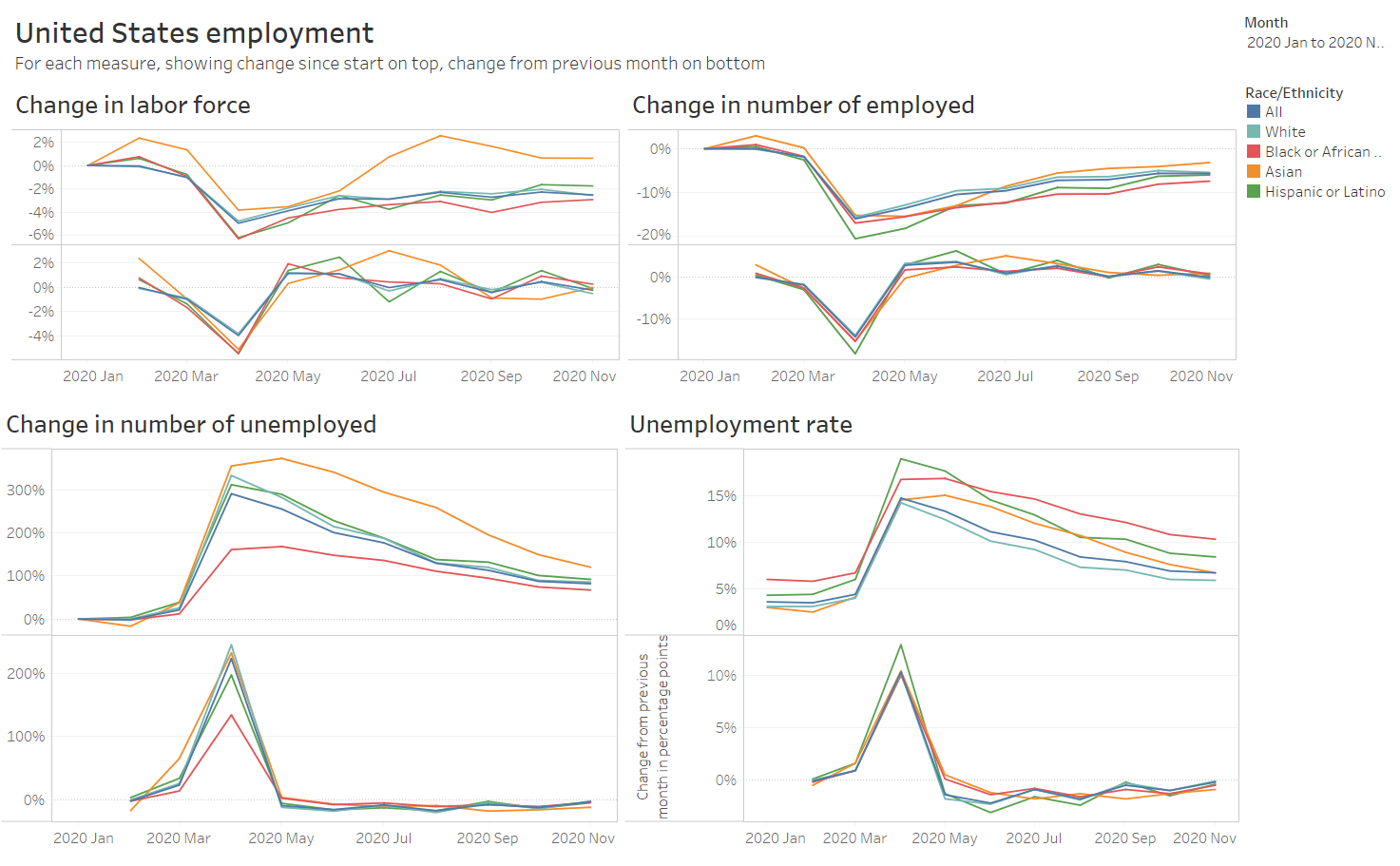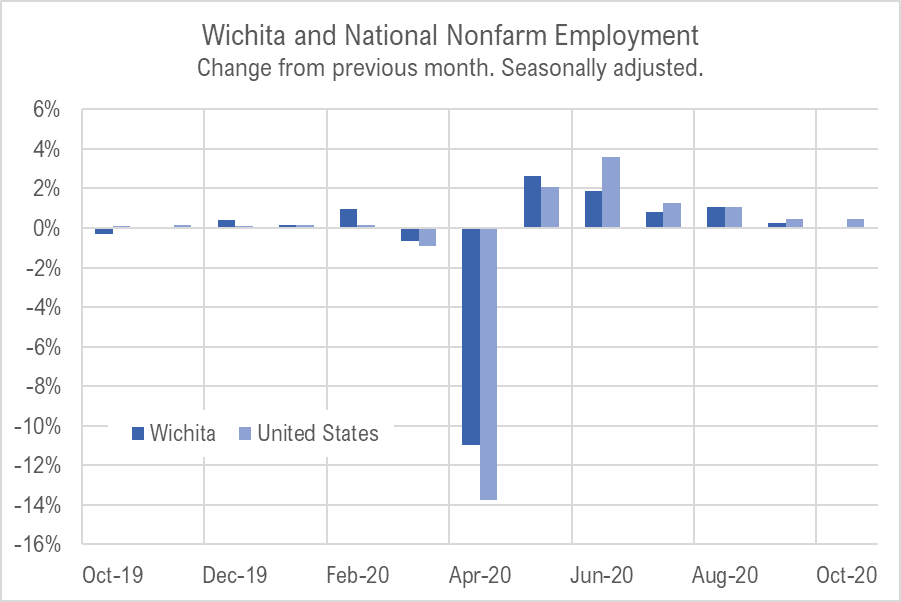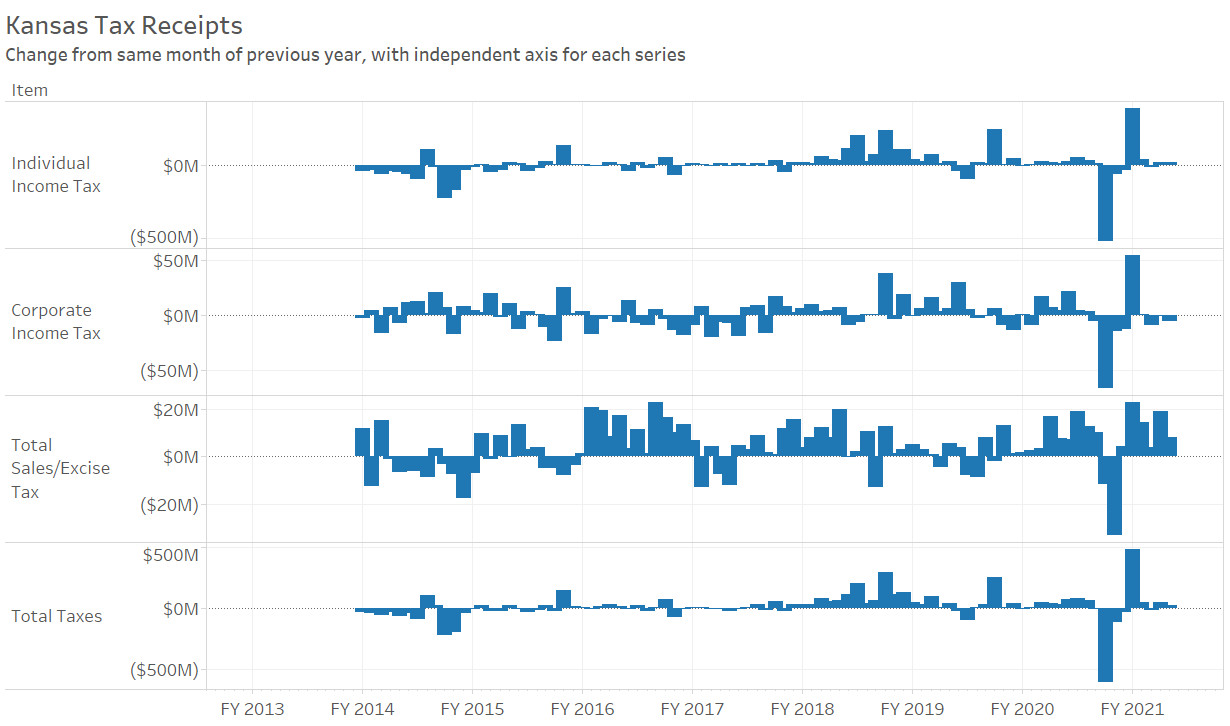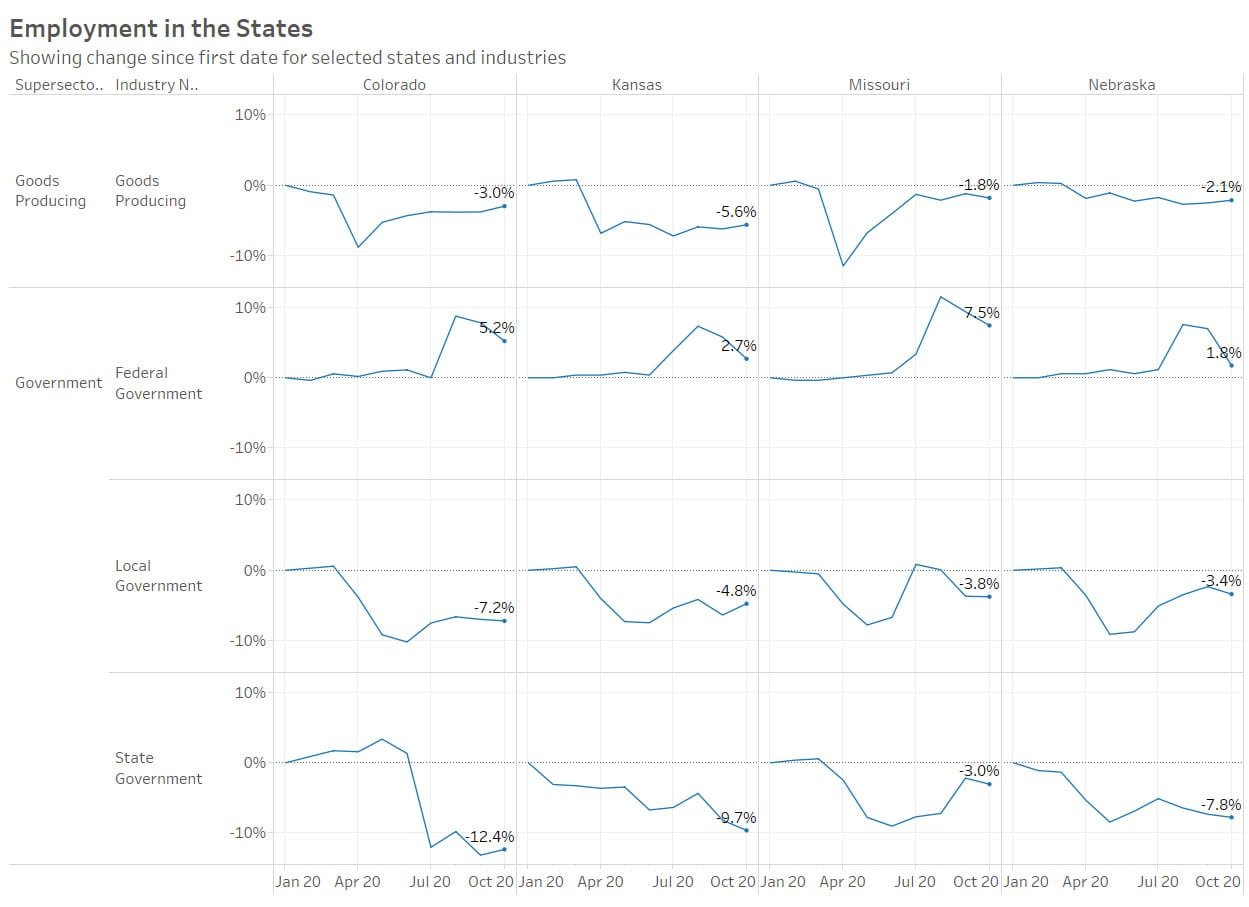Tag: Economics
-

National employment, November 2020
An interactive visualization of national employment data, updated through November 2020.
-

Wichita jobs and employment, October 2020
For the Wichita metropolitan area in October 2020, the number of unemployed persons is up, the unemployment rate is up, and the number of people working is down, all by large amounts, when compared to the same month one year ago. The recent trend, however, is positive.
-

Kansas tax revenue, November 2020
For November 2020, total Kansas tax revenue was 4.3 percent greater than last November. Over the five months of the current fiscal year, tax revenue rose by 20.6 percent.
-

Updated: Effects of pandemic on employment in states
The effects of the response to the pandemic vary widely among the states.
-

Kansas jobs, October 2020
In Kansas for October 2020, the unemployment rate continued to fall, and both the labor force and the number of jobs rose.
-

Updated: National employment
An interactive visualization of employment data, updated through October 2020.
-

Pandemic’s influence on economy’s path
No matter who is president, a large challenge lies ahead, says the Federal Reserve.
-

Kansas tax revenue, October 2020
For October 2020, total Kansas tax revenue was 7.9 percent greater than last October. Over the four months of the current fiscal year, tax revenue rose by 24.4 percent.
-

Wichita jobs and employment, September 2020
For the Wichita metropolitan area in September 2020, the number of unemployed persons is up, the unemployment rate is up, and the number of people working is down, all by large amounts, when compared to the same month one year ago. The recent trend, however, is positive, although Wichita is recovering slower than the nation.